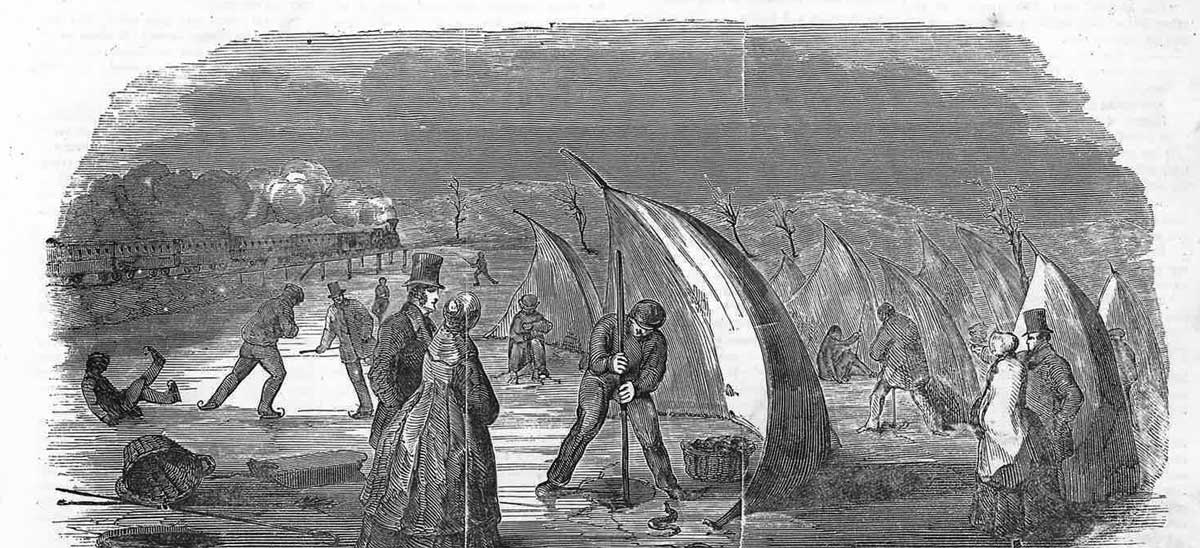The Running Silver Project

“In a word, it is unbelievable, indeed, undescribable,
as also incomprehensible what quantity is found there.
One must behold oneself.”
Observation on river herring runs: William Byrd, Natural History of Virginia (1728)
Background
That one could “walk drishod on the backs” of schools of salmon, shad, and other diadromous fishes moving up Atlantic coast rivers was a description of their migratory runs during early Colonial times. Accounts tell of awe-inspiring numbers of spawners pushing their way upriver, the waters “running silver,” to complete life cycles that once replenished major riverine and marine fisheries along the Eastern Seaboard. But over the centuries these stocks were so stressed that virtually all are now severely depressed, with many biologically or commercially extinct. My book, Running Silver: Restoring Atlantic Rivers and Their Great Fish Migrations, is an attempt to elevate public consciousness of the contrasts between the historical and the present in an effort to better inform the future and to inspire greater restoration efforts.
Some examples: until 1975, Atlantic salmon—dubbed the “King of Fish” by Izaak Walton and among the world’s most valuable food fishes—supported major fisheries in ocean and river waters. Before 1905, Atlantic sturgeon, a source of caviar, were so abundant in the Delaware that they were harvested like lumber—with females averaging 250 lbs. And until recently, American shad, whose Latin name Alosa sapidissima means “most delicious of herrings,” were caught in vast numbers at sea, in estuaries, and far up Piedmont drainages.
Today, runs of salmon in some Maine rivers number in the single digits. A 40-year, $200 million restoration in the Connecticut River—once a great spawning ground—did not generate a hint of recovery and has been canceled. Atlantic sturgeon in the Hudson and across their range failed so rapidly in the 1990s that an unprecedented 40-year moratorium was enacted on all U.S. Atlantic sturgeon fishing, followed by endangered species status listing. And shad continue their more than century-old decline. These charismatic species are three of the dozen fishes that live their lives in both freshwater and marine habitats along North America’s east coast. This group also includes shortnose sturgeon, striped bass, hickory shad, alewife, blueback herring, rainbow smelt, sea lamprey, and American eel, almost all of which have shown huge decreases across their ranges. Research I helped conduct has shown reductions in abundance of 99% from historical peaks in many of their populations.
Project Description
The Running Silver Project is a broadly ambitious and quixotic and largely solo endeavor aimed at sharpening awareness of the profound losses that have occurred among these fishes as a motivator to aid in their restoration, with my book, Running Silver, as its first product. And at developing innovative means to achieve meaningful restoration. One promising approach is what Karin Limburg and I are calling the Shared River Concept, i.e., the idea that removals of large hydro dams actually present opportunities for replacement of energy production using alternative sources. I also remain interested in a number of related questions, including, for example, a comprehensive examination of the success of technical fishways, particularly concerning the issue of scale; the relative effects of in-river versus marine influences on population viability, and the historical and contemporary carrying capacities of large Atlantic rivers.
Conservation Impacts
Diadromous fishes are defined by their complicated life cycles of switching between fresh and salt waters—for which the benefits outweigh the costs—resulting in historically great abundances of their unadulterated populations. And, although diadromous fishes are most visible, most easily harvested, and of greatest economic importance when concentrated during their mainly springtime inland migrations, these fishes also supported major marine fisheries through the remainder of the year. Today, however, efforts to restore diadromous fish stocks in Atlantic rivers are uninspired, with no sense of urgency and little recognition of the potential of these systems. The central premise of the Running Silver Project is that declines of fisheries for Atlantic coast diadromous fishes have resulted from a myriad of anthropogenic factors and that the crucial linkage between the loss of sea fisheries for diadromous fishes and the mismanagement of rivers and inshore coastal waters has not been drawn clearly enough. Daniel Pauly’s concept of “shifting baselines” has contributed to the acceptance of this depleted state, one that can be corrected by firmly shifting the baseline back to its origin.
In his essay Apostrophe to the Ocean, James Carlton (1998) asked the rhetorical question “What were the coastal oceans like in 1899, in 1799, in 1699?” His response: as we enter the 21st century we do not even have a rudimentary synthetic picture but that having such an understanding would be the sine qua non of modern work in conservation science. Carlton also stated that 99% of the available historical record remains essentially unread by conservation biologists. I believe this record can be marshaled to achieve great benefits. Conservation organizations and governmental agencies are more likely to mobilize if they are inspired by a scientifically accurate picture of what the landscape looked like and how it functioned in the historical past. Historical ecology, i.e., the unearthing and synthesis of hitherto forgotten or disregarded historical information and the resetting of shifted baselines has the potential to inform management restoration efforts of diadromous fishes by offering a firmer knowledge of “what was,” and thus, “what could be.”